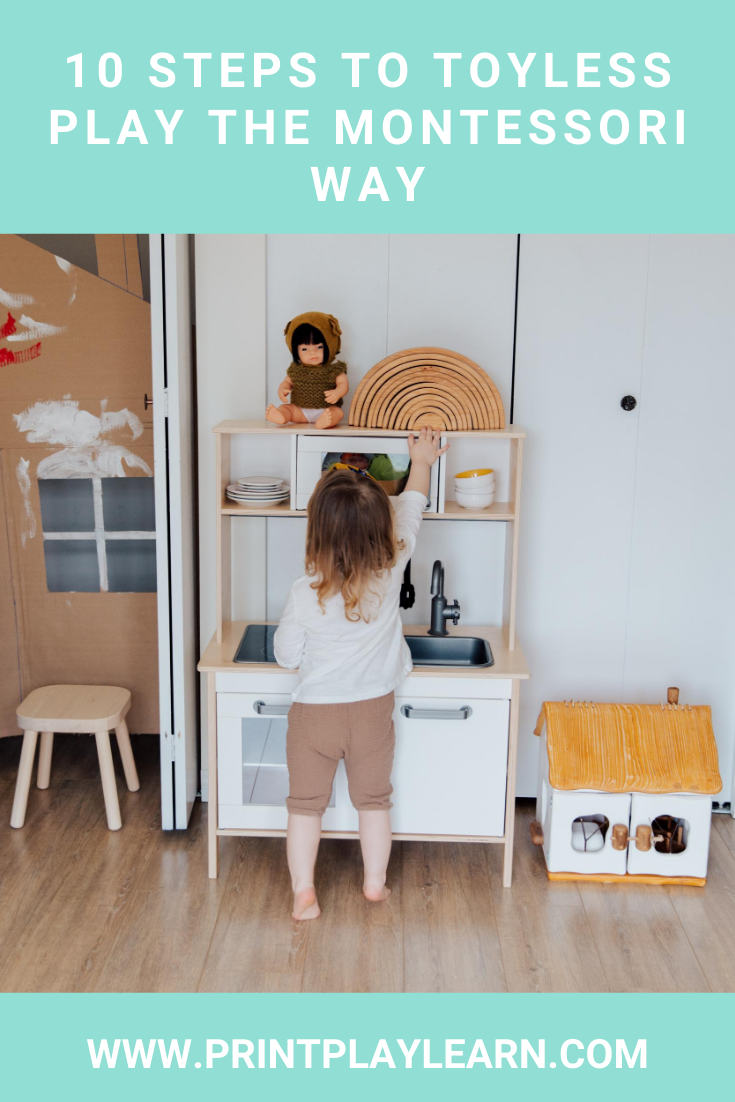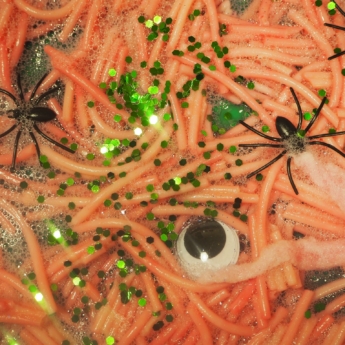10 Steps to Toyless Play the Montessori Way
We all want to help our children make the most of childhood, learn, play, and thrive while having fun, but feeling confident in how we actually do it can be tricky… Thankfully, the Montessori approach to play and learning is a lovely example of how it can be done!
Here are 10 steps to help shape your child’s play the Montessori way:
1. Simplify your play area
First up, look at your child’s play spaces and simplify. The goal is to make your play space calming and uncluttered, so you can nurture your child’s concentration and give them room to imagine. Aim to have few things out (both to play with and on display) and give plenty of space between each item.
A Montessori play space is a space which has limited options but, in its minimalism, spark’s your child’s curiosity and allows them to focus on the items they do have available. Montessori encourages neutral colours and natural materials as opposed to the bright plastics often associated with kids toys too.
2. Hide what you do have
Don’t panic, you don’t need to go out and charity shop all your child’s existing toys to encourage Montessori style play. Hide them away instead. Having toys well organised and in boxes which can be hidden away allows you to pick and choose what options are available, and when.
If you notice there’s something out in your child’s play space that they haven’t interacted with for a while, box it up and store it to bring out at another time. Rotation is key to keeping resources interesting and helping your child focus on what really engages them.
3. Give everything a place
With the toys you do have available, make it simple for your children to put things away themselves with a dedicated space for everything to go away when they’re done (rather than throwing everything in one big toy box).
4. Make sure there’s an open play area
If you have the room, Montessori requires plenty of open workspace, both on the floor and at child-height tables or surfaces. This makes sure your child has space for lots of movement (really important to child development) and easy access surfaces for doing puzzles or creating.
5. Switch toys for ‘real’ things
The real toyless fun on Montessori comes from switching toys for ‘real’ things where possible! For example, letting your child explore real vegetables rather than wooden play food or having real cups and plates instead of toy ones.
Be brave and remember that your child is more capable than you imagine! Supervision is always important but have a think about what roleplay items you could introduce that are real life items rather than toys.
6. Have a cosy spot
Respecting your child’s need to unwind or be upset and express their feelings is an important part of Montessori. Having a dedicated cosy space with cushions on the floor or a comfy chair, provides you a space to encourage your child to retreat and rest when they need to calm down or simply want some quiet time.
7. Pick child sized furniture
Empower your child by making sure they have furniture which is easy for them to use on their own. Chairs and tables at the right height, and shelves they can reach from without needing any help.
8. Don’t forget, helping out is fun!
Another fun way to encourage toyless fun the Montessori way? Have your child take part in everyday life alongside you! Young children love to help with cooking, cleaning, doing the laundry – so make the most of it and watch as your child enjoys a sense of responsibility while learning new skills.
9. Add creativity to play time
Montessori-style activities are hands-on, build concentration and help your children master different skills through creativity and fun. Help your children get creative with access to instruments, music, climbing opportunities, books, arts, and crafts materials (for open-ended making) and things to sort, post and thread.
10. The key: less is more
Toyless Montessori play isn’t about depriving your child of any stimulation and hoping they’ll find a way to entertain themselves… it focuses on giving your child access to select activities and resources so they can make the most of them without being distracted or overwhelmed. Less is more, so as you adapt your style of play, pay close attention to what your child is really engaging with and remove the rest – for now. You can swap and change things at any time.
Slow down, step back and watch what your child can do without hundreds of toys.
Ready to encourage play the Montessori way? Our printable resources are designed to support toyless play and open-ended learning. Find out more and get your starter pack here.

